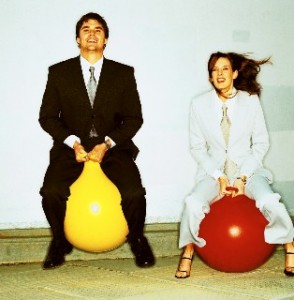Speaking magic: 5 brain-captivating principles to magnify your message
 Whether you speak, present or teach, you may need some superpower infusions to combat short attention spans and the multitude of distractions we are all bombarded with in any given moment. Luckily, with the help of a few mind tricks, sprinkled with the current brain science pixie dust, you can turn your messages into attention-pulling magnets. Here are your five brain-captivating principles to craft magical as opposed to mixed messages.
Whether you speak, present or teach, you may need some superpower infusions to combat short attention spans and the multitude of distractions we are all bombarded with in any given moment. Luckily, with the help of a few mind tricks, sprinkled with the current brain science pixie dust, you can turn your messages into attention-pulling magnets. Here are your five brain-captivating principles to craft magical as opposed to mixed messages.
1. Dare to care and show it. Passion is infectious. People want to feel and see passion. Our brains are social. We have a special set of neurons, called “mirror” neurons, to help us with our human connections. Neuroscientists are exploring whether the mirror neuron system in the brain is linked to empathy and enables us to better understand other people’s intentions, feelings, and emotions. Emotions spread across our social networks. When we smile at someone, chances are high that the person will smile back. Even yawning is contagious. If you are bored with your own topic, don’t expect your audience to jump up from their seats in excitement. In contrast, if you are passionate and your body language shows it, your audience will respond with emotion. Passion in the delivery of your message can even compensate for some deficiencies in your presentation. It is a magical ingredient!
2. Highlight presentation patterns. Your most important points will blaze brighter if they are set off properly. When you prepare your presentation, think about the patterns your presentation creates rather than the usual outline of the talk. Perhaps, we can borrow some magic from people with synesthesia, whose senses blend so that, for example, they may see colors or feel the texture of the letters they read. If your presentation were a tapestry you wove out of the threads of your stories and messages, what would it look like? Our brains thrive on patterns. They are wired to recognize patterns and make predictions, based on our previous learning and experiences. What patterns do you intend to create or break? You can make certain messages stand out by varying the flow of your presentation and using breaks, music, visuals, activities and pauses that can give your audience the opportunity to reflect and absorb the material. Define the white space in the structure of your presentation that makes the main points more visible and allows for the percolation of ideas to the surface.
3. Sync minds through storytelling. Nothing captivates the human brain more than a good story. Stories engage us on the emotional level. Experiences accompanied by strong emotions are more memorable. When the story resonates with the listener, the brains of the speaker and listener may synchronize, suggesting a deeper human connection. The best stories are co-created with your audience. Make sure your participants can see themselves in your story and can relate to the characters and their journeys. Your story can provide hooks for the participants to hang their own assumptions, beliefs, fears, and hopes. We all suffer from the so called the “egocentric bias” – we think we know better. Asking the audience to take perspectives of different characters in your story may help them overcome this bias and be more receptive to other points of view. The more your participants feel the ownership of the story, the more they become invested in its development and success.
4. Misdirect and provoke. At the core of every joke are frustrated expectations. Humor jolts the brain by planting predictions and then cleverly violating them. When we are surprised or caught off guard, we pay more attention. We want to make sense of the situation to feel more in control. Humor elevates our mood, and positive mood has been found to enhance creative problem solving. In addition to humor, good questions offer a way to provoke your participants into thinking differently. Use open-ended questions, which start with who, what, when, how, where to open possibilities. Ask people to offer examples or experiences that contradict their own current way of thinking. You can’t change other people’s minds, but you can “confuse” them enough that they might change their own.
5. Work behind the scenes to direct the spotlight. Our physical environment is a silent decision-maker that influences perceptions and judgment. Just like a magician can manipulate the scene to make the audience shift its attention to something while a watch disappears from the wrist of an unsuspecting volunteer, the presenter can use smells, colors, sounds, and textures to influence the moods and minds of the audience. For example, playing a piece of music while the audience gathers can set the mood for your presentation. A moderate-level of ambient noise (about 70 decibels) enhances creative problem-solving and may even lead to a greater adoption of innovative products. The smell of peppermint or rosemary can help people pay attention to details while lavender oil promotes relaxation. Cacao activates the production of endorphins that make us happy. I once attended the Rubin Museum of Art Brainwave series, in which neuroscientist David Linden talked about his book “The Compass of Pleasure” while master chocolatier Jacques Torres provided the audience with his mouthwatering chocolate samples. (You can watch the video here, alas no chocolates.) Thus, the cognitive pursuit of pleasure was magnified by the gustatory pursuit. Create a multisensory experience for your audience, and it will make your messages more memorable.
What is your favorite mind trick to get a point across?




